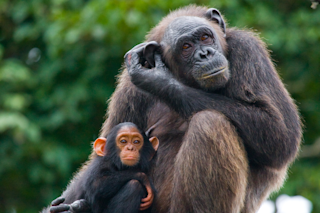Can animals talk? Once the answer would have been a simple no: although animals may communicate by issuing a bark, shriek, or moo, those vocalizations--to use the animal behaviorists’ careful distinction--were assumed to have no specific internal meaning. The difference between vocalizing and talking is the difference between crying "Oh!" when you see an ax murderer in your house, and crying "Look out, dear, there’s an ax murderer in the house!" Animals, it was thought, could do only the former; only humans could do the latter.
The trend lately has been away from this particular bit of human arrogance and toward the view that our linguistic abilities, while unique, lie at the top of a continuum that extends well into the animal kingdom. Constantine Slobodchikoff, a biologist at the University of Northern Arizona, is at the leading edge of that trend. In five years of field studies he has mapped ...














